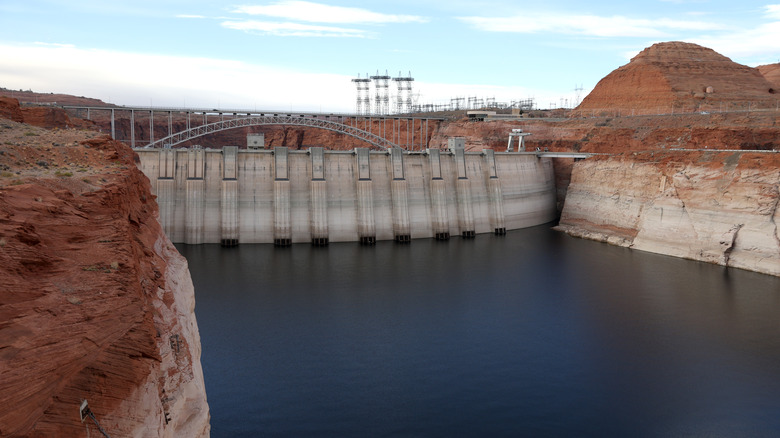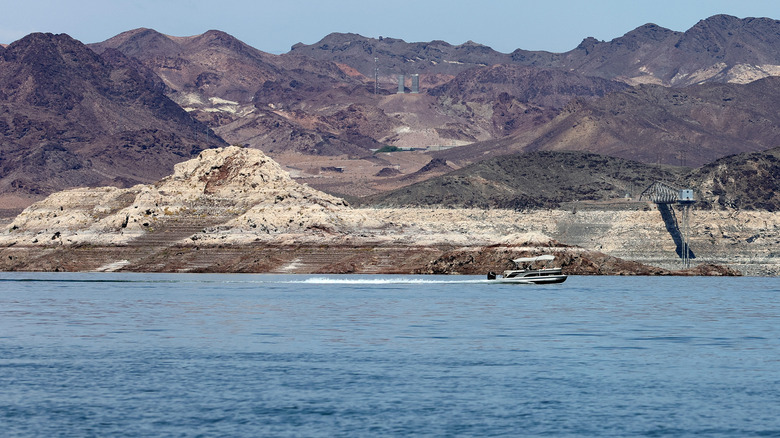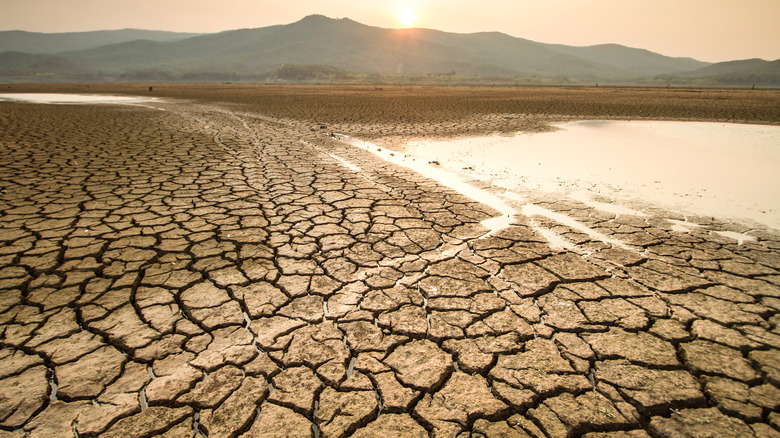What Is Dead Pool Status?
CBS News reports that Lake Mead and Lake Powell, the two largest reservoirs in the country, are drying up. According to the United Nations Environment Programme (UNEP), these reservoirs provide water and power to Nevada, Arizona, California, Wyoming, Colorado, New Mexico, and Mexico. Additionally, the water is used for agricultural purposes. In other words, these low water levels could negatively affect millions of people. Robert Glennon, an emeritus professor at the University of Arizona, told NBC News, "This is deadly serious stuff."
Water levels in Lake Mead, which borders Arizona and Nevada, are so low that human remains and an old boat have recently surfaced. Per CBS News, the same can be said for Lake Powell, which is located in both Utah and Nevada; it's currently only a quarter full. ABC News reports that water regulation efforts across Arizona, New Mexico, and Mexico are now in full swing for Lake Mead. The U.S. Bureau of Reclamation and water have hopes that this will ultimately raise the reservoirs' water levels (via NBC News).
That being said, both Lake Mead and Lake Powell are incredibly close to reaching what is known as dead pool status. The Conversation states that this occurs when reservoir water levels are so low that they are no longer able to flow downstream into their respective dams. The publication explains that Lake Powell is behind Glen Canyon Dam, while Lake Mead is behind Hoover Dam.
Hydroelectricity will be at risk
CBS News writes that Lake Mead should be at 1,220 feet. Currently, it's 1,040. NASA notes that in order to generate hydropower, the lake must be at least 1,000 feet. In other words, a dead pool does not mean that there will not be any water left in the lake (per NBC News). It means that water levels will be so low that hydroelectricity might not be able to be produced as readily. The Conversation explains that both Lake Powell and Lake Mead have turbines. Water flows into these turbines, which causes them to spin to create electricity.
However, The Conversation goes on to say that if a lake reaches dead pool status, the turbine's hydraulic head, which provides pressure, will not work effectively. Simply put, the turbines must be above a certain amount of water to generate electricity. If not, the turbines will become damaged. This will either lead to a shut down of the turbines or less electricity overall (via NBC News).
Another article from NBC News reports that Diane Mead, great-granddaughter of Elwood Mead, whom Lake Mead is named, said that he would be "horrified from a scientific perspective as well as a water rights perspective" about the lake's possible dead pool status. Per the United Nations Environment Programme, water regulation and cuts might not be enough to reverse the damage that has been done.
Climate change is to blame
According to NBC News, the real issues regarding Lake Mead's imminent dead pool status are both climate change and the overuse of water in Southwestern states. However, Robert Glennon says that it will take years for Lake Mead to fully reach dead pool status. Even so, Lis Mullin Bernhardt from the United Nations Environment Programme explained that "[t]he conditions in the American West, which we're seeing around the Colorado River basin, have been so dry for more than 20 years that we're no longer speaking of a drought." She added, "We refer to it as 'aridification' — a new very dry normal."
Common Dreams writes that climate change caused by fossil fuel extractions has undoubtedly led to increasing drought conditions. In fact, Yale Climate Connections reports that years-long droughts referred to as megadroughts will increase from 12% to more than 60% in the near future. Per NBC News, Glennon notes, "This is the 23rd year of drought, and we don't know if it's a 23-year drought, a 50-year drought or maybe it's a 100-year drought," he went on to say, "We just don't know what's going to turn this around." Nevertheless, The Conversation states that the current concern for officials is having enough water for Lake Mead and Lake Powell to generate electricity.


